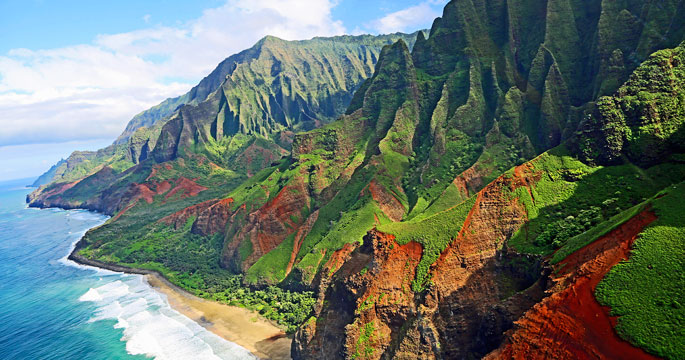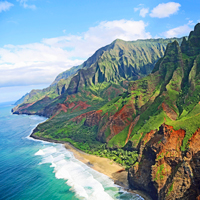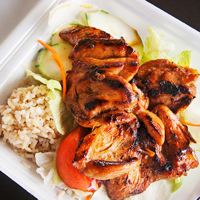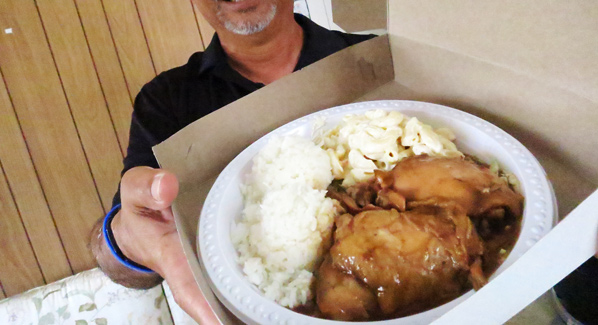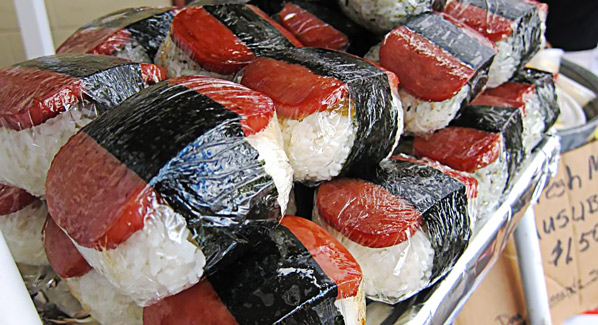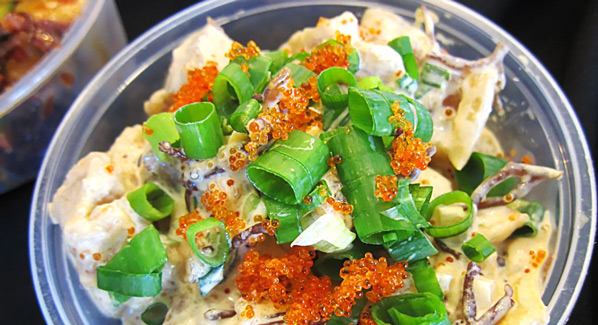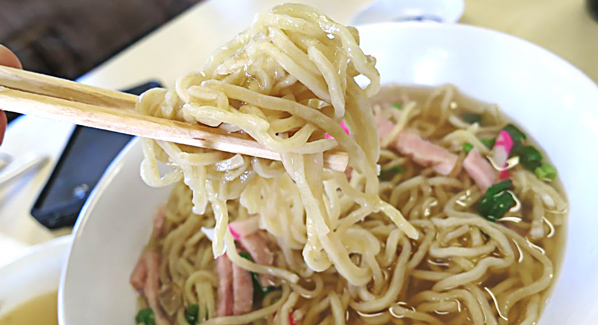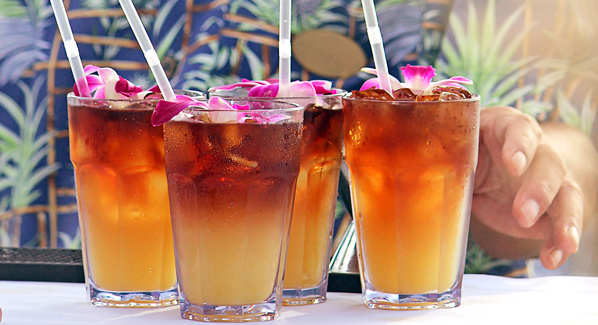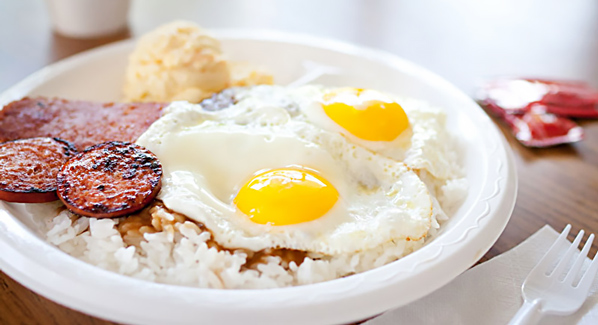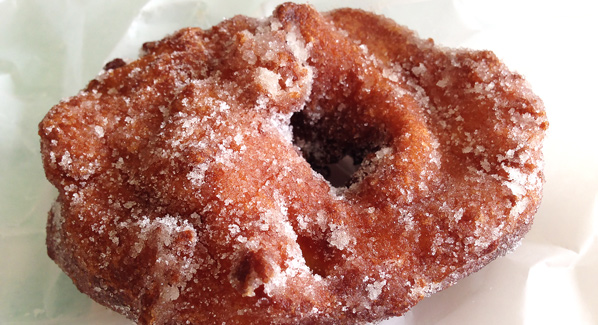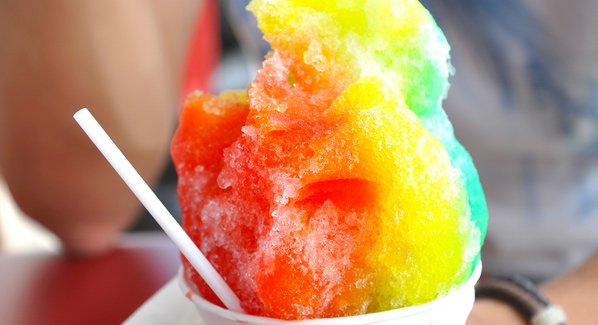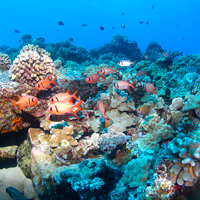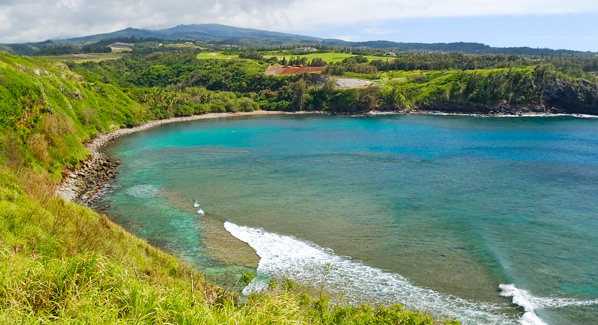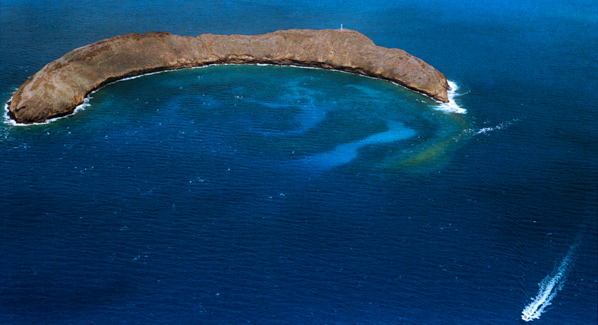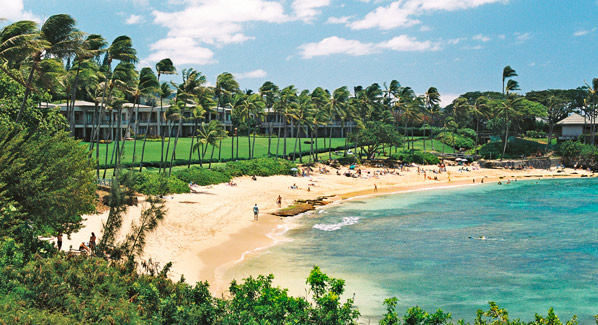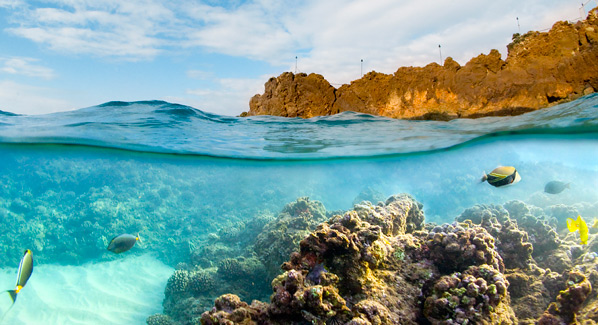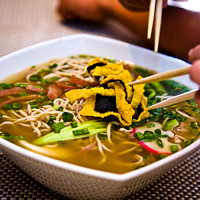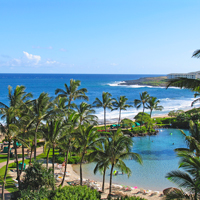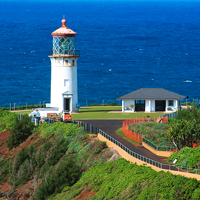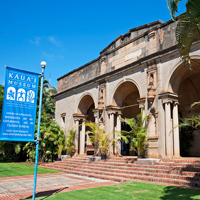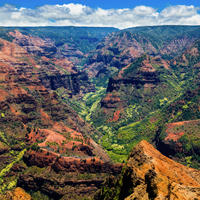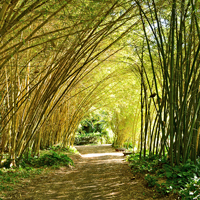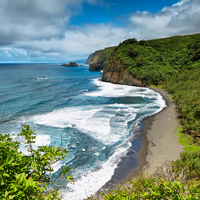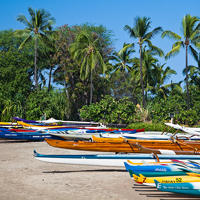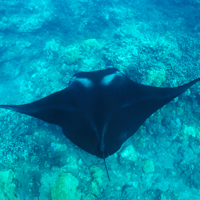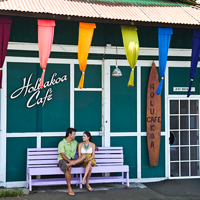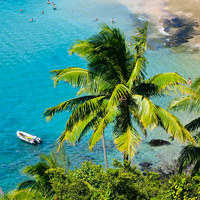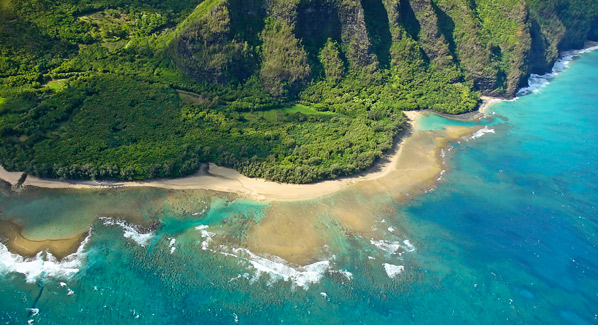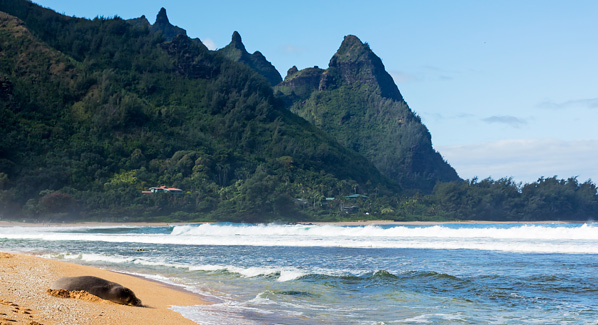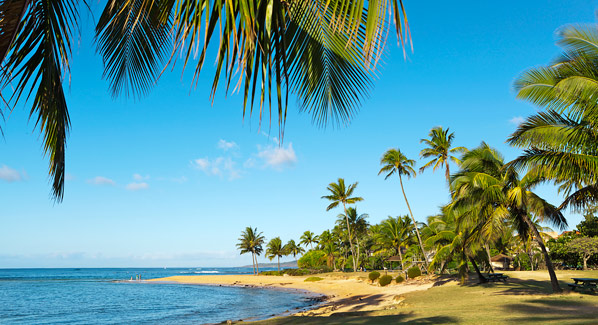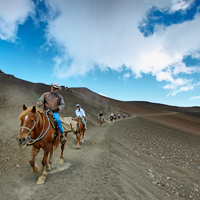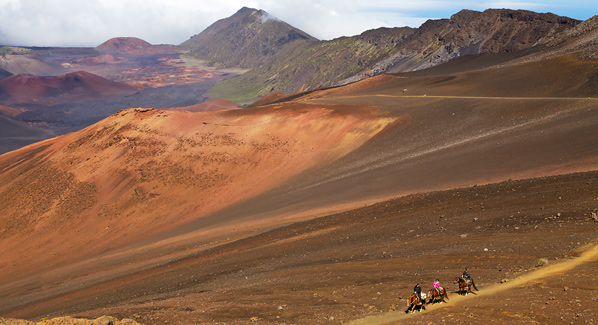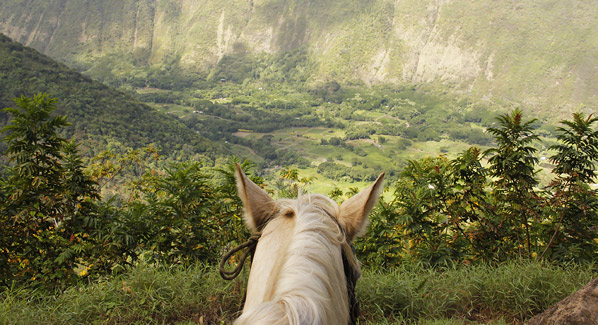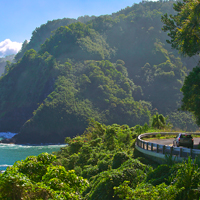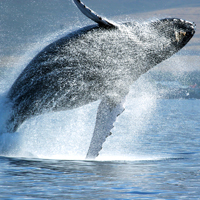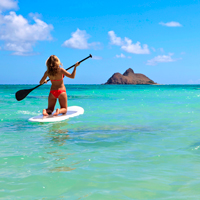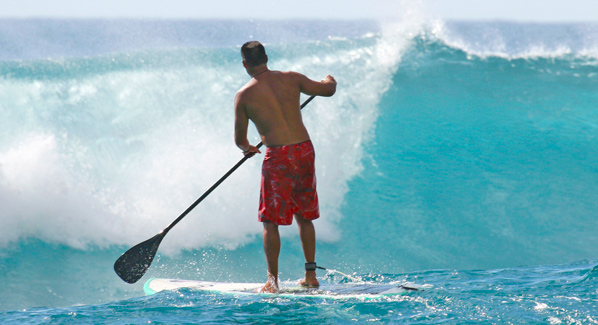Oahu is known for its world-class surf, majestic mountains and long stretches of white sandy beaches. It’s why seven million people travel here every year. The island can also be a culinary adventure, with a variety of cuisines and dishes you can’t find anywhere else. But don’t rely solely on the guidebooks. Find out where the locals eat—the sometimes hard-to-find, off-the-GPS stops that satisfy the palettes of our multicultural mix. Here are 10 of my personal favorite places to eat on Oahu, and what you should order.
The Pig and the Lady
It was well after lunchtime and we still had to squeeze between patrons and steaming bowls of pho on a communal table at The Pig and the Lady, one of the newest restaurants to open in Oahu’s revitalized Chinatown. The restaurant, run by the Le family, started as a pop-up at farmer’s markets in Honolulu and garnered loyal, if not downright rabid fans craving its popular banh mi and Vietnamese noodle soups. In November 2013, the family opened its first brick-and-mortar shop with a menu that boasts both market favorites and new dishes like pho tsukemen (dipping noodles) and slices of homemade pie. Parking is tricky; you’ll have to park in a nearby municipal lot or get lucky and score a space on the street.
Favorite Bites: Salad lovers should try the hoi and chicken salad with cabbage, Vietnamese cilantro and fried shallots topped with fish sauce vinaigrette. The P&L Pho features smoked bacon and a 12-hour brisket paired with a marinated soft egg in the restaurant’s signature broth. And get the dessert of the week; it’s never a disappointment. The Pig and the Lady, 83 N. King St., Chinatown, (808) 585-8255, www.thepigandthelady.com
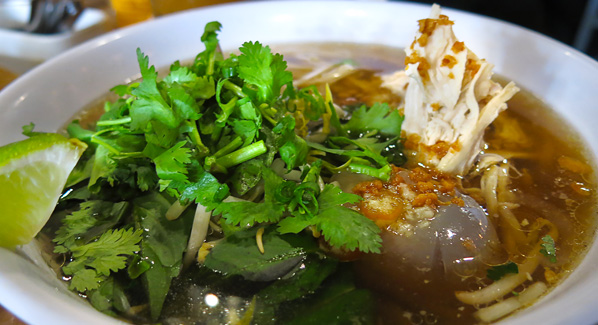
The Pig and the Lady serves up some of Oahu’s favorite pho noodle soups. A popular choice is the P&L Pho, which adds smoked bacon and brisket to the kitchen’s signature broth. Photo: Catherine Toth
Rainbow Drive-In
The line twisted from the four open windows and into the parking lot — and it was a hot Saturday. Yet, cars, many of them topped with surfboards, kept pulling into Rainbow Drive-In, the iconic restaurant that’s been serving plate lunches and sandwiches since 1961. It’s a throwback to the old-fashioned drive-ins, where service is quick and the food is affordable. The plate lunch is an iconic Hawaii meal, consisting of two scoops of white rice, a generous dollop of mayonnaise-laden macaroni salad and some kind of entrée, which can range from barbecue chicken to breaded mahimahi.
Favorite Bites: The mix plate is, hands down, the most popular plate lunch, boasting barbecue beef, a breaded chicken cutlet and mahimahi. Or try the loco moco, a product of Hawaii’s plantation era. This simple dish is just white rice topped with a hamburger patty (or two), an egg and brown gravy. Don’t forget to try the drive-in’s famous Slush Float, a dessert that combines strawberry slush with vanilla ice cream. Rainbow Drive-In, 3308 Kanaina Ave., Kapahulu, (808) 737-0177, www.rainbowdrivein.com
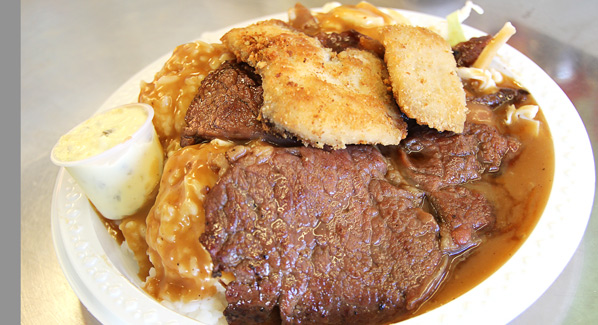
The Rainbow Drive-In’s mixed plate is pure Hawaiian comfort food, piling portions of beef, chicken and fish on a mound of gravy-laden rice, with a side of macaroni salad. Photo: Catherine Toth
Fresh Catch
You might not notice the smoker in the rear parking lot, but that’s the secret behind the smoked meats and taco poke (pronounced poh-kay) from Fresh Catch in Kaneohe. Poke, a popular appetizer in the Islands, consists of cubed ahi (yellowfin tuna) marinated in sea salt with shoyu, inamona (roasted crusted kukui nut), sesame oil, seaweed and chopped chili pepper. There are many variations of this dish, ranging from raw salmon to cured octopus. There’s lots of parking and seating here, though most folks order their poke and smoked meat to go.
Favorite Bites: In addition to the tako poke (smoked octopus), try the smoke meat and onions plate with hearty portions of smoked pork served on a bed of freshly chopped onions. The ahi katsu is also very popular, covered in furikake (a dry Japanese condiment using seaweed) and pan-fried until golden brown. Fresh Catch, 45- 1118 Kamehameha Highway, Kaneohe, (808) 235-7653, www.freshcatch808.com
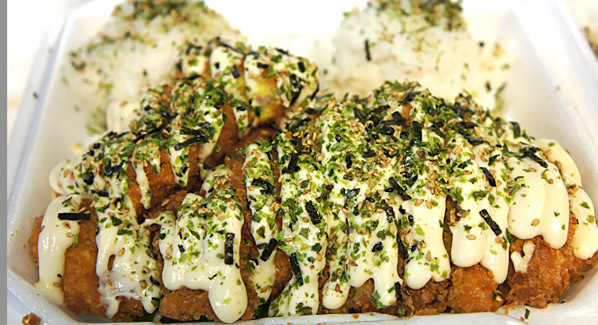
In addition to a tempting array of smoked meats and fishes, Fresh Catch is known for its ahi katsu, which is pan-fried yellowfin tuna flavored with a seaweed-based breading. Photo: Melissa Chang.
Shige’s Saimin Restaurant
Saimin is a noodle soup dish that came out of Hawaii’s plantation era, combining Japanese ramen, Chinese mein and Filipino pancit, using curly egg noodles in a hot broth. You can find an authentic bowl of this at Shige’s Saimin Restaurant in Wahiawa on the way to the North Shore. It’s one of the last remaining saimin stands on Oahu that makes its own noodles. They’re flat and doughy and a perfect complement for the stand’s salty broth.
Favorite Bites: Saimin, of course, with barbecue beef sticks. Shige’s Saimin Restaurant, 70 Kukui St., #108, Wahiawa, (808) 621-3621
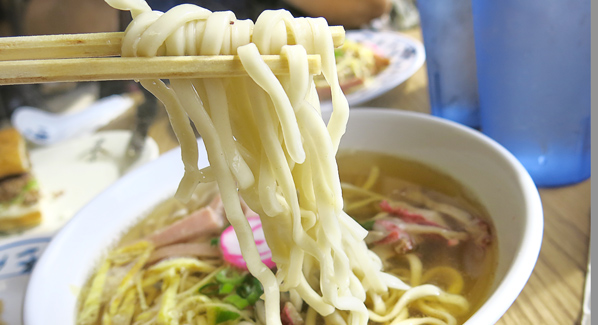
Soup lovers make the drive to Shige’s Saimin Restaurant in the mid-island town of Wahiawa for the chance to enjoy a bowl of authentic saimin, with noodles made fresh on site. Photo: Catherine Toth
Alicia’s Market
Hidden in the industrial area of Kalihi, a small neighborhood a few miles outside of Waikiki is one of the island’s best-kept secrets when it comes to p?p?, or appetizers. And mostly because it looks like an old-time market complete with posters plastered to its glass window exterior and a bright neon “open” sign. Go past the vegetable aisle toward the back of the market; that’s where the action is. A glass case houses a seemingly unlimited variety of poke, salted seaweed, boiled peanuts, smoked pork and other island favorites.
Favorite Bites: Try the market’s most popular poke, the masago wasabi poke, made with fish roe (eggs) and Japanese horseradish tossed with cubed ahi. The smoked pork and beef are stellar choices, too, perfect for tailgating during football season. Alicia’s Market, 267 Mokauea St., Kalihi, (808) 841-1921
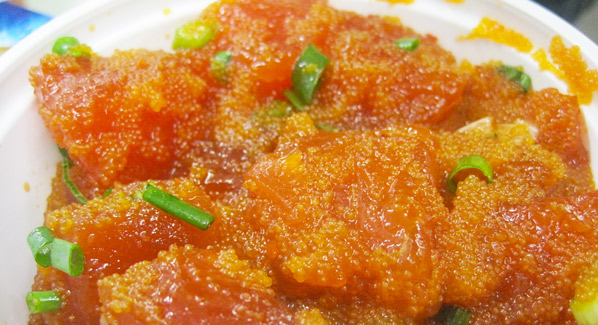
Alicia’s Market serves up numerous varieties of poke, including the classic version, with raw ahi tuna marinated in sea salt, and seasoned with soy, sesame and chili peppers. Photo: Catherine Toth
Agnes’ Portuguese Bake Shop
On your way back from a day lounging on picturesque Lanikai Beach on Oahu’s windward side, stop by for a fried treat you can only find in Hawaii. Malasadas are a popular Portuguese dessert that’s simple: it’s just fried sweet dough doused in white sugar. But few have perfected the art of making these round, sugary donuts like Agnes’ Portuguese Bake Shop. These balls of fried goodness are made to order. And while you’re waiting, you can browse the display cases filled with other goodies such as lemon bars, bear claws, turnovers, bacon maple fritters, Russian tea biscuits and a variety of pies. There’s parking and lots of seating inside, though you’ll likely just want to grab a box and go.
Favorite Bites: Malasadas with a cup of the bakery’s freshly brewed island coffee. Agnes’ Portuguese Bake Shop, 46 Hoolai St., Kailua, (808) 262-5367, www.agnesbakeshop.com
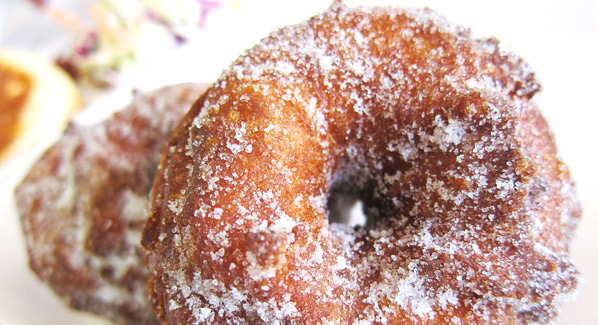
The signature offering at Agnes’ Portuguese Bake Shop is the Malasada, a Portuguese take on the dough doused in white sugar. These confections are made hot and fresh to order. Photo: Catherine Toth
Opal’s Thai
What started as a popular food truck in the north shore town of Haleiwa turned into a brick-and-mortar restaurant not too far from its original location. The only thing that’s changed is that owner Opel Sirichandhra can serve more people. Opal’s Thai offers authentic Thai food that doesn’t skimp on flavor or spice. And Sirichandhra still insists on choosing food for you, asking only for your heat tolerance and favorite ingredients. He’ll come back and hand you a plate that you never thought about ordering—and you’ll love every bite. It’s cozy and there are lines during lunchtime, so get there early.
Favorite Bites: Despite its strange and slightly unappetizing name, order the larb, a tangy minced pork salad with ground, toasted rice; and the drunken noodles. You can’t go wrong with the pad Thai noodles either. Opal’s Thai, 66-197 Kamehameha Highway, North Shore, (808) 637-7950
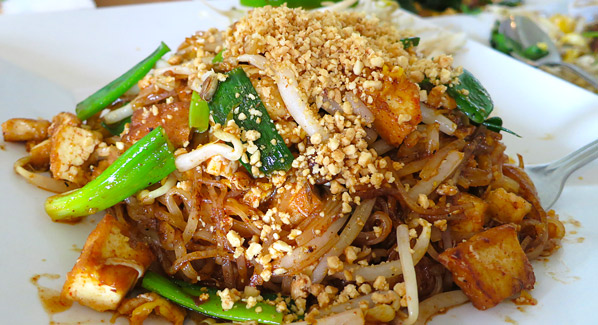
Regulars at Opal’s Thai don’t consult a menu, and trust the chef/owner to whip up original Thai recipes that vary from day to day. His only question: how hot do you like it? Photo: Catherine Toth
Koko Head Café
It’s a common complaint among Oahu locals: there aren’t a lot of breakfast and brunch places on the island. Well, that started to change in recent years. The latest brunch spot to hit the culinary scene is Koko Head Café, a venture between Kevin Hanney, owner of nearby 12th Avenue Grill, and Lee Anne Wong, trained culinary ninja and “Top Chef” alum. Wong runs the kitchen and creates such innovative dishes as kimchi bacon cheddar scones, miso- smoked pork and onion omelet, poi biscuits and gravy with a soft- poached egg and mushroom gravy, and daily dumplings.
Favorite Bites: For a unique flavor, try the breakfast bibimbap, a Korean take on breakfast with bacon, Portuguese sausage, heritage ham, house made kimchi, soy-mirin mushrooms, ong choy, sesame carrots and bean sprouts with a sunny-up egg served over crispy garlic rice in a hot skillet. Talk about a meal! Koko Head Cafe, 1145c 12th Avenue, Kaimuki, (808) 732-8920, www.kokoheadcafe.com
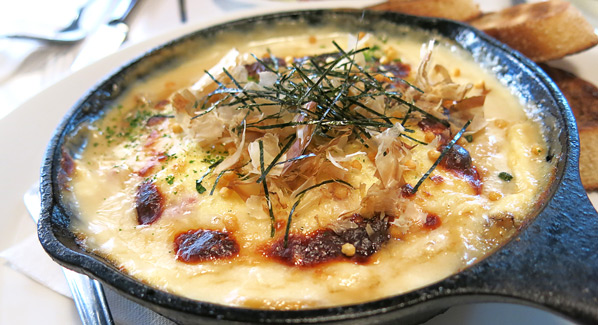
The Koko Head Cafe’s breakfast bibimbap is a savory collision of cultures and flavors, pairing breakfast meats, eggs, rice and Oriental vegetables in a satisfying skillet meal. Photo: Catherine Toth
Side Street Inn
If you’re looking for unpretentious bar food in something other than a trendy gastropub, check out the popular late-night sports bar Side Street Inn on Kapahulu Avenue. Even James Beard award- winning chefs like Alan Wong dine here. This place specializes in large, shareable plates of island comfort-foods such as Hawaiian- style pulehu short ribs, steamed Manila clams with Portuguese sausage and bell peppers, and kimchi fried rice. The vibe is lively, with flat screen TVs surrounding the dining area and a full bar ready for anything. This isn’t the place for a romantic date night; it’s loud and unapologetic about it. There’s valet parking under the building or street park along Kapahulu.
Favorite Bites: The most popular dish is the pan-fried pork chops, crispy on the outside, juicy on the inside. Wash it down with the bar’s wide selection of domestic and imported beers — including its own signature Side Street Inn Rogue Ale — wines, spirits and cocktails. Side Street Inn, 614 Kapahulu Ave., (808) 739-3939, www.sidestreetinn.com
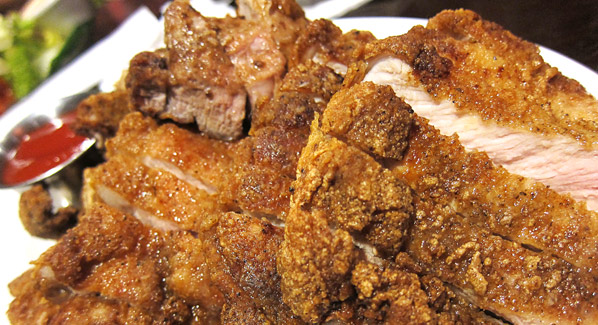
The Side Street Inn serves savory pub food with an island flair. Signature favorites include Hawaiian-style pulehu short ribs, kimchi fried rice and crispy pan-fried pork chops. Photo: Catherine Toth
Kiwami Ramen
This beloved ramen shop was originally located in a basement food court of the Waikiki Shopping Plaza. Ramen lovers across the island were devastated by it’s closing when the center underwent renovation, and plans to re-open were sketchy. Then, in October 2013, the ramen-ya re-opened on Keeaumoku Street in the space vacated by a short-lived udon shop. Kiwami is best known for its tsukemen, or dipping-style ramen. (The noodles and a more concentrated broth are served separately.) The fat, chewy noodles, which come either hot or cold, are always cooked perfectly and the chicken-based dipping broths — in shio (salt), shoyu or spicy — are rich and flavorful. Parking is $1 below the building, which is a boon on busy Keeaumoku.
Favorite Bites: Since it’s unique to the shop, get the tsukemen. You dip the noodles—you can order them cold or hot—into the concentrated broth, then into your mouth. The gyoza here is house made and worth the 10-minute wait. Kiwami Ramen, 641 Keeaumoku St., (808) 955-1122, www. kiwami-ramen.com
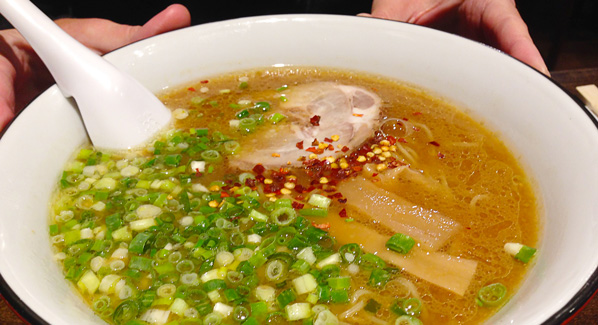
Now reopened in a new location, Kiwami Ramen is Honolulu’s favorite stop for tsukemen—ramen-style noodles served hot or cold for dipping in salty or spicy chicken-based broths. Photo: Catherine Toth

